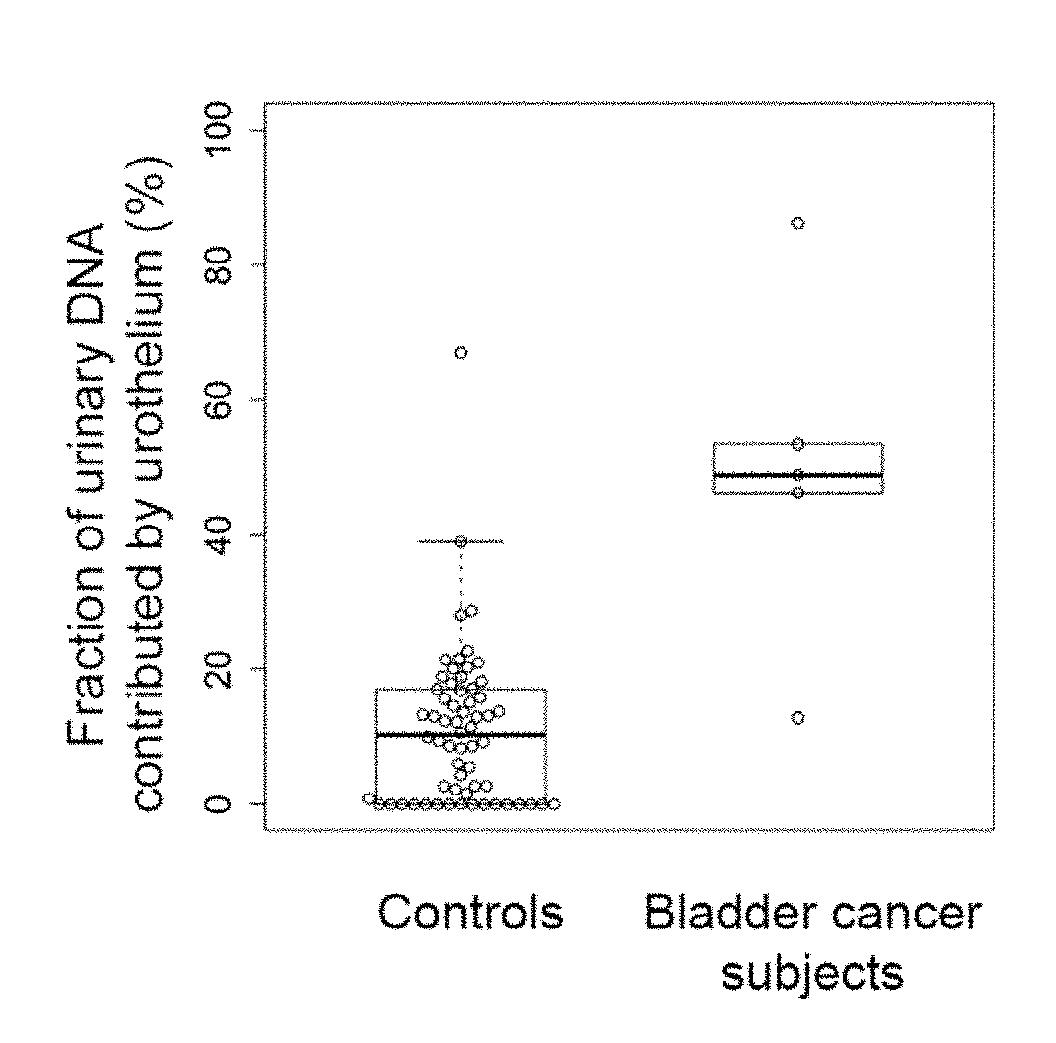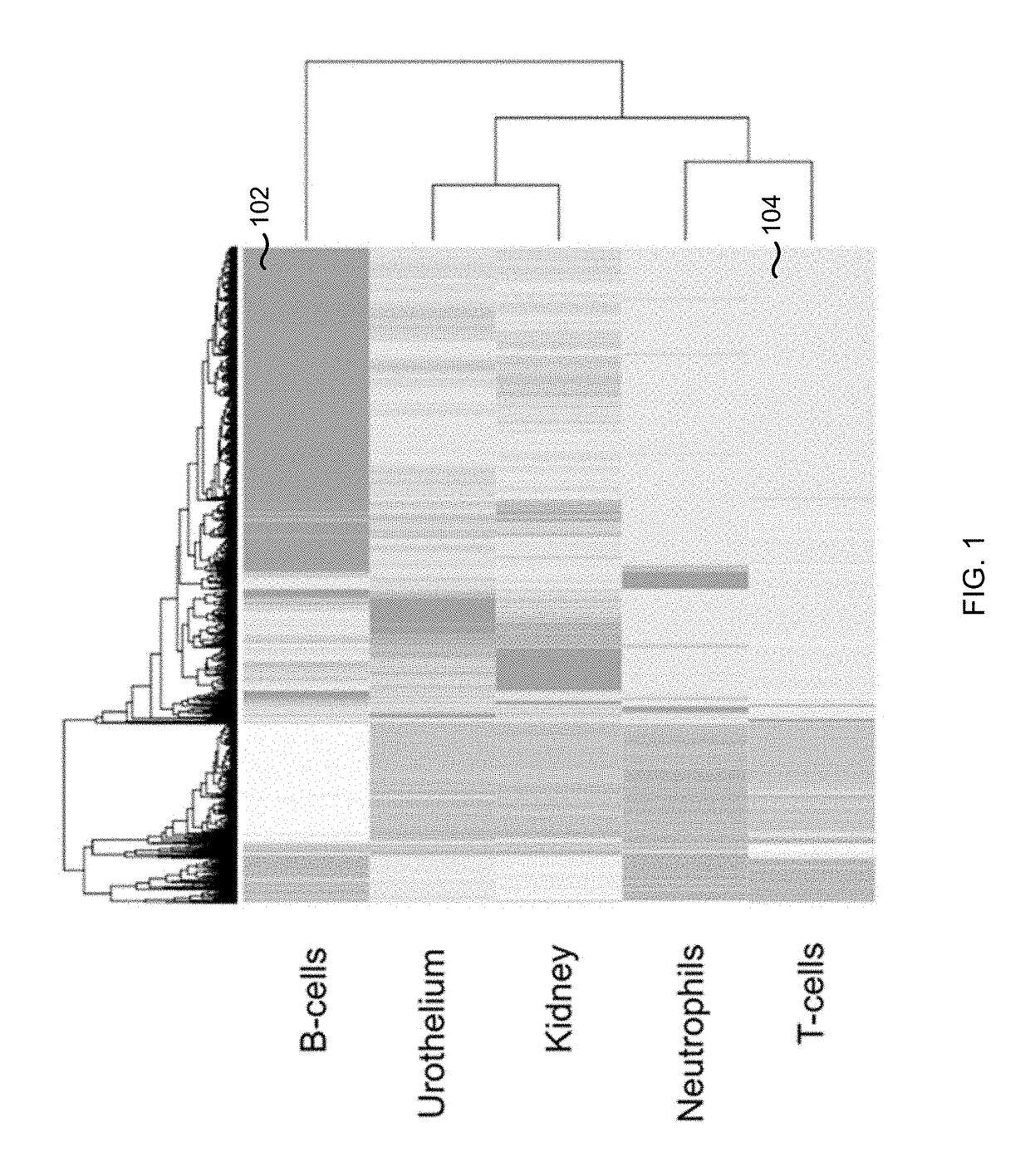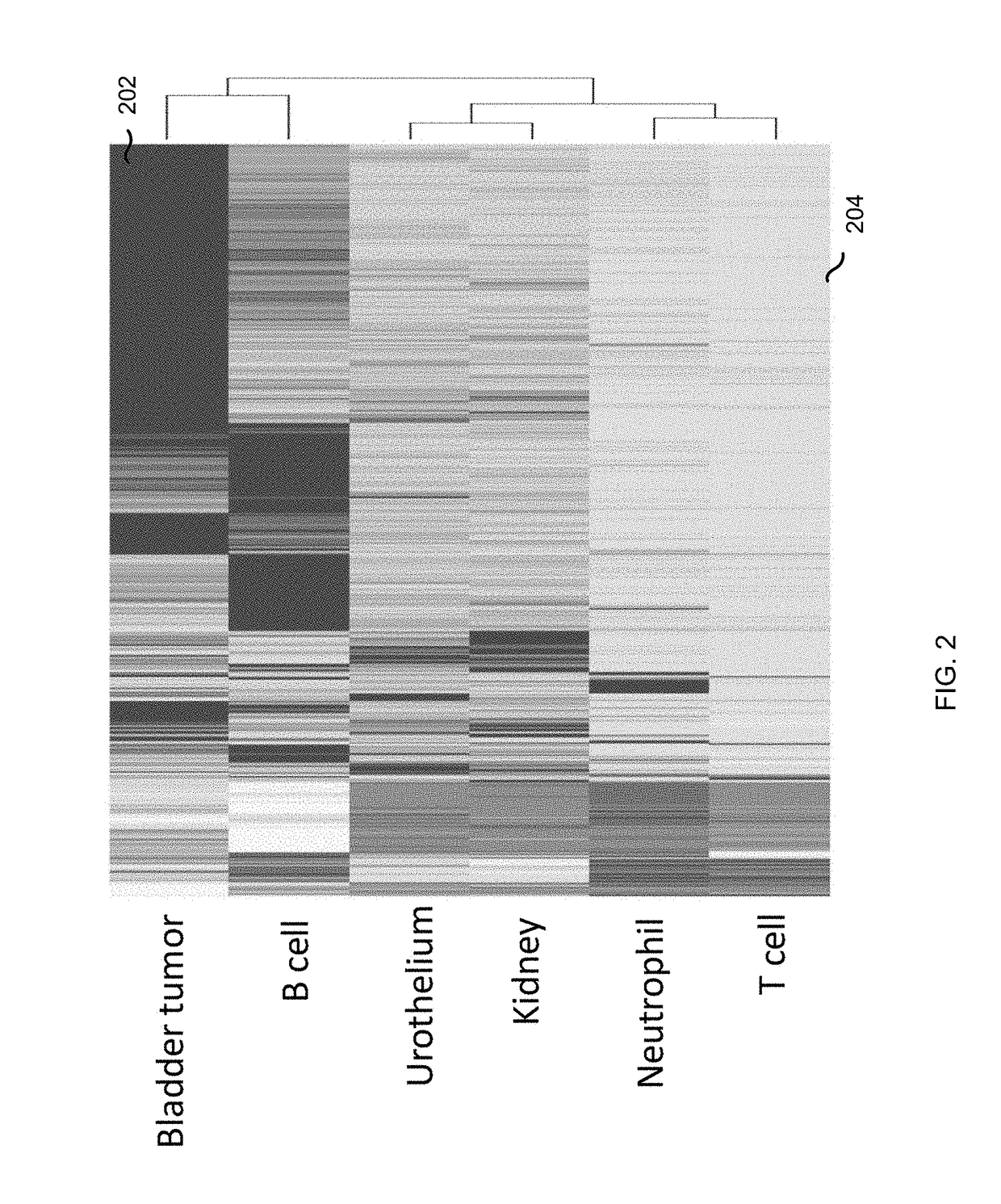Analysis of cell-free DNA in urine and other samples
a cell-free dna and urine technology, applied in the field of urine and other samples, can solve the problems of difficult to use urine (or non-invasive biopsies besides blood, such as saliva or stool samples) to detect cancer or other diseases, and the technique is not readily amended to broadly applicable screening techniques of asymptomatic patients to diagnose cancer
- Summary
- Abstract
- Description
- Claims
- Application Information
AI Technical Summary
Benefits of technology
Problems solved by technology
Method used
Image
Examples
Embodiment Construction
[0071]Urinary cell-free (cf) DNA, as well as other organ-associated samples, hold great potential as a completely noninvasive form of liquid biopsy, or other non-invasive biopsy, such as a stool sample. Knowledge of the composition of cfDNA by tissue of origin is useful for guiding its clinical uses. However, the composition of such samples can be highly variable, thereby limiting wide applicability for use as a biopsy. For example, the amount of transrenal DNA from any particular organ can vary widely from sample to sample, thereby making the percentage of cell-free DNA from a kidney vary as well.
[0072]CpG site methylation is an important form of epigenetic regulation and methylation signatures can be identified for different tissues (19,20) and cell types (21). We have recently demonstrated that the proportional contribution of plasma cfDNA from different tissues can be ascertained using genomewide bisulfite sequencing and deconvolution analyses of the sequencing data (22).
[0073]T...
PUM
| Property | Measurement | Unit |
|---|---|---|
| Fraction | aaaaa | aaaaa |
| Fraction | aaaaa | aaaaa |
| Fraction | aaaaa | aaaaa |
Abstract
Description
Claims
Application Information
 Login to View More
Login to View More - R&D
- Intellectual Property
- Life Sciences
- Materials
- Tech Scout
- Unparalleled Data Quality
- Higher Quality Content
- 60% Fewer Hallucinations
Browse by: Latest US Patents, China's latest patents, Technical Efficacy Thesaurus, Application Domain, Technology Topic, Popular Technical Reports.
© 2025 PatSnap. All rights reserved.Legal|Privacy policy|Modern Slavery Act Transparency Statement|Sitemap|About US| Contact US: help@patsnap.com



